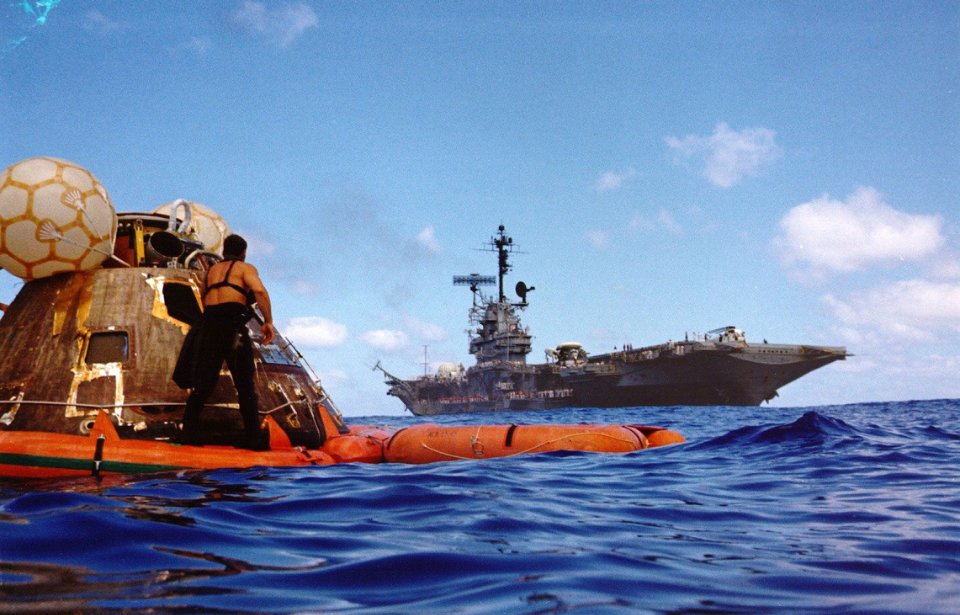On December 7, 1972, a three-man crew was launched into space on the final mission of NASA‘s Apollo program. For 12 days, they orbited space, landed on the Moon and conducted various scientific experiments. On December 19, the team prepared to return to Earth. Among those waiting to retrieve the Apollo 17 crew was the USS Ticonderoga (CVS-14), the aircraft carrier that was assigned to their recovery.
Commissioned in 1944, Ticonderoga first served the US Navy in the Pacific Theater of the Second World War. Throughout her career, the carrier underwent multiple modernizations, ensuring she remained relevant and capable of accommodating ever-evolving naval demands. This meant she also saw service in Vietnam. By the early 1970s, Ticonderoga was a vital naval asset equipped to handle various missions, including astronaut recovery.
As Apollo 17 re-entered the Earth’s atmosphere, Ticonderoga sat stationed in the designated recovery area in the Pacific Ocean. Her vast flight deck, capable of launching and retrieving numerous aircraft, was prepared to act as a recovery platform for the spacecraft. The ship’s crew, as well as the astronauts aboard the Command Module, underwent rigorous training and rehearsals to ensure a seamless recovery operation.
When the capsule carrying the three Apollo 17 astronauts successfully splashed down within Ticonderoga‘s zone, the Navy’s experienced retrieval team, accompanied by specially-trained divers, rapidly sprung into action to secure the spacecraft. The Command Module landed four miles from the carrier and was greeted within two minutes by US Navy Underwater Demolition Team (UDT) frogmen, who were dropped to secure the flotation collars and open the hatch.
The above photo, taken on that day, shows Apollo 17 in the Pacific after its successful return to Earth. In the background is Ticonderoga, where astronauts Ronald Evans, Harrison Schmitt and Eugene Cernan were taken by helicopter only 52 minutes after touching town. The man standing on the Command Module is one of the frogmen who waited with the vessel until it was also taken aboard Ticonderoga, 71 minutes after landing.
More from us: The USS Triton (SSRN-586) Was the First Vessel to Complete a Submerged Circumnavigation of the World
According to reports, the crew of Ticonderoga were ecstatic about the recovery; despite high temperatures, hundreds of sailors flooded the deck to cheer and take photos of Apollo 17. When Evans, Schmitt and Cernan came aboard, they gave official speeches before being shepherded off for medical examinations. Ticonderoga was where they spent their first night back, full of revelry and celebration for a successful mission.
